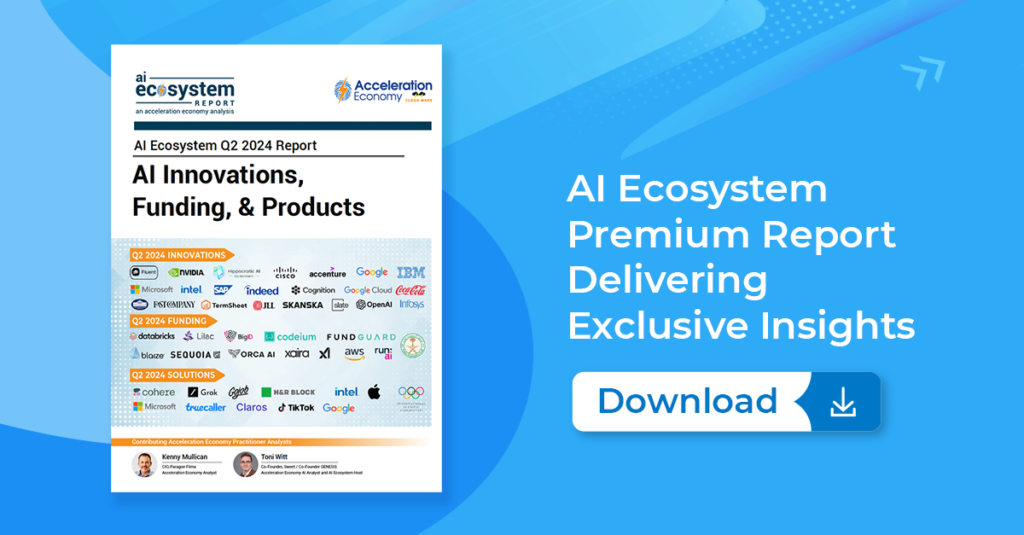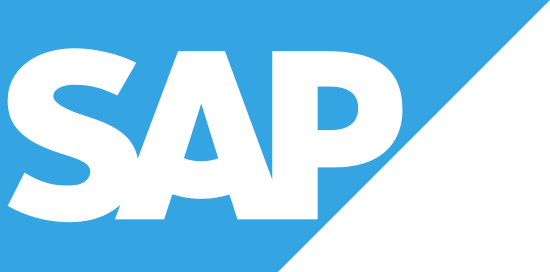
Powered by strong ongoing customer demand from on-prem migrations, widespread interest in its Business AI solutions, and a fast-growing ecosystem, SAP sees no signs of diminished demand and continues to dramatically outpace Salesforce, Oracle, and Workday in the enterprise-apps market.
This stark contrast in the fortunes of several major players in the Cloud Wars Top 10 was highlighted vividly last week when SAP reported stellar Q2 numbers:
- Cloud ERP Suite revenue was up 33% to $3.72 billion;
- overall cloud revenue rose 25% to $4.52 billion;and
- current cloud backlog rose 28% to $16.1 billion.
By contrast, both Workday and Salesforce said they are seeing significant slowdowns in customer demand — with Salesforce expecting revenue to grow only 8% to 9% for its fiscal year — while Oracle’s cloud-applications revenue grew just 10% in its most-recent quarter.
But for SAP, the outlook is radically different. On last week’s Q2 earnings call, CFO Dominik Asam laid out the contrast very clearly.
“We’re acknowledging from our perspective that all of you [financial analysts] are telling us how difficult the market is out there, and we want to acknowledge that we will really watch the market. But for the time being, there is nothing that should come in our way,” Asam said.
“It’s just to recognize that we don’t want to come across as being completely carried away and thinking nothing can happen to us — we want to be very cautious and prudent about what the environment is doing.
“But so far, we don’t see these bumps in the road that so many others are talking about.”
CEO Christian Klein underscored that same distinction between the market reception to what SAP is offering to that from Salesforce, Oracle, and SAP.
“In every quarter, you win a few upside deals and you have a few slippages, but all of these slippages were not macro-related. Actually, we had a good start in July where we saw that some of the deals that had slipped were already signed now.
“So we didn’t see any kind of macroeconomic impacts,” Klein said emphatically.
In responding to the analysts’ questions about how and why SAP has been able to avoid the uncertain growth prospects dogging the other big apps vendors — what one analyst called the current “difficult macro environment in software” — Klein focused on the three market dynamics highlighted above: strong customer uptake of SAP’s Business AI, accelerating migrations from on-prem to the cloud, and a highly successful partner ecosystem.
“My main message to you on this call is this: we continue to deliver,” Klein said at the top of his opening remarks on the July 22 Q2 earnings call.
“Despite the volatile environment in the software industry, our growth momentum remained strong in Q2. More and more customers are moving to the cloud and thanks to SAP’s Business AI capabilities, our portfolio is becoming more and more attractive.”
Ask Cloud Wars AI Agent about this analysis
1. The impact of Business AI. “We have seen a fantastic performance in half-year one, and now as we enter half-year two, we are seeing a very healthy pipeline,” Klein said before describing the two facets of that future opportunity.
“While ‘pipeline’ generally means sales pipeline, I think our customers are also seeing our very strong innovation pipeline. When you sit together with our product owners and see what we are delivering on GenAI use cases and the customers who are sharing their feedback early on, it’s pretty exciting because those customers are seeing a ton of value. And you have seen now in Q2 already the first impact of Business AI on our numbers,” Klein said, noting that SAP has released 60 GenAI use cases and expects to add 100 more by the end of 2024.
“We have now the first use-cases live for Joule in HR and finance, and supply chain, and everything that we do in order management is already enabled via our Joule copilot,” Klein said, mentioning use-cases for content search in HR, travel, and supply chains.
Another high-growth area for Business AI is document management, Klein said.
“I mentioned the Concur example, where 150,000 end users already benefit today from embedded AI that itemizes hotel bills and processes them real-time automatically in the system. And then there’s everything you do around supplier contract management, employee contracts, and customer contracts.”
2. The impact of the on-prem migrations to the cloud accelerating. “I would say we are also just at the beginning. I mean, please don’t forget, when customers are using their ECC solutions or their on-prem monolithic ERP solution today, that doesn’t mean that they use all the modules,” Klein said. “Now, with our land and expand strategy, we have real momentum. The customers are really learning that they have to connect the different parts of their company and the different parts of the supply chain.”
One prominent customer example cited by Klein on the call involved ADP.
“We put our partnership with the global HR services leader, ADP, on a new footing just yesterday,” Klein said, “and together we will shift ADP’s entire SAP on-premise payroll offering to a cloud-based solution.”
One of the inducements SAP is offering to its on-prem customers is that SAP will provide many customers with an expert enterprise architect to help those customers plot out very precisely how to move their business — not just their technology — to the cloud.
“And what is so important with these enterprise architects, of course Accenture and Deloitte and EY and PwC are delivering and they are doing some of the migrations themselves,” Klein said.
“But it’s also so important for us with regard to land and expand that we are guiding the customer on how to build a semantic layer with SAP, on how to connect the dots on the business processes, and how to infuse workflow automation with SAP on the Business Technology Platform, and how to use the Integration Suite — and the customers are so excited.”
At the center of this acceleration to the cloud is SAP’s innovative RISE program that was created a few years ago to very specifically help customers map out their business transformations first, and then underpin those plans with a cloud-technology strategy.
“The feedback from customers has been so, so good, and that helps make our RISE offer more attractive because other companies are hearing that and they say, ‘Hey, SAP is really doing a business transformation, and they’re not doing only a technical migration,” Klein said.
“So that was a great move. And the hiring machine is on — we will further increase the coverage of our RISE customer base in the next month.”

The AI Ecosystem Q2 2024 Report compiles the innovations, funding, and products highlighted in AI Ecosystem Reports from the second quarter of 2024. Download now for perspectives on the companies, innovations, and solutions shaping the future of AI.













